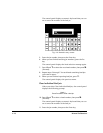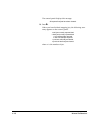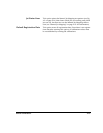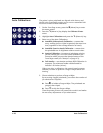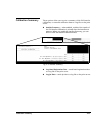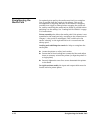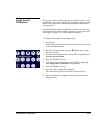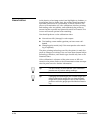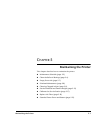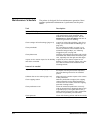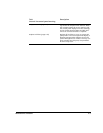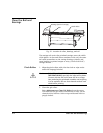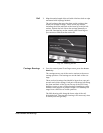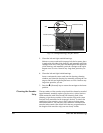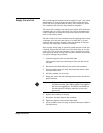
4-24 Linearization
Linearization As the density of an image varies from highlights to shadows, or
from lighter tints to darker tints, the printer should accurately
reproduce these areas in a predictable, or linear, fashion. The
process of linearization (or color calibration) involves printing
and reading color test patches, and calibrating the printer to
ensure that the expected and printed densities will match. This
in turn will ensure optimal color matching.
You should perform a color calibration when:
◆ You notice a shift (change) in color output
◆ First loading a new media type that you have never cali-
brated
◆ Changing print mode (only if the most precise color match-
ing is required)
The piezo printing technology used by the printer is much less
prone to changes in ink drop size over time than thermal inkjet
technology; therefore, each media type should only have to be
linearized once.
Color calibration is a feature of the print server or RIP con-
nected to the printer. Refer to the documentation that accompa-
nies the print server for further information.
Tip
For best results, be sure that the color calibration
patches are dry before taking readings.
Tip
Changing the head height and camera height will
affect linearization results. Be sure that the head
height and camera height are set to their desired
positions with the gauges provided before lineariz-
ing.



